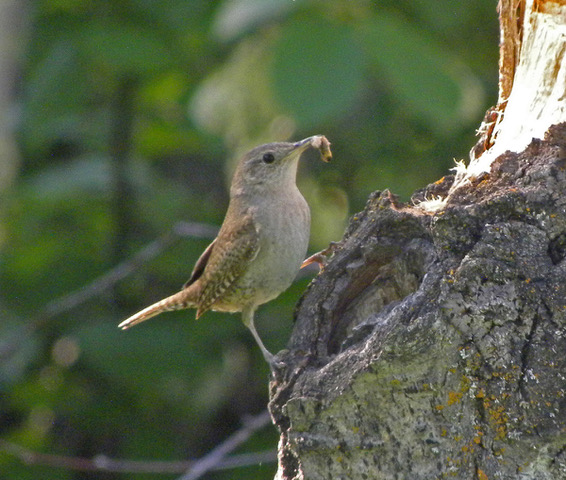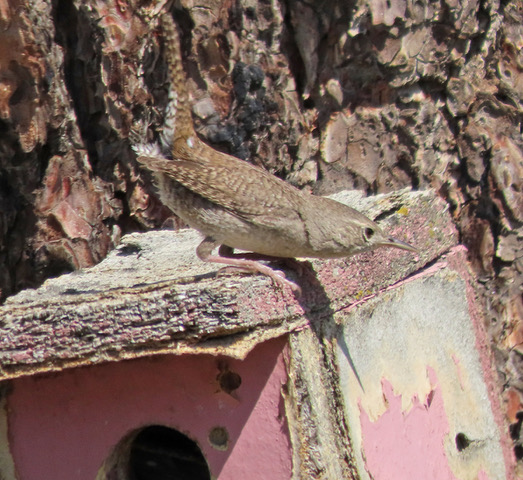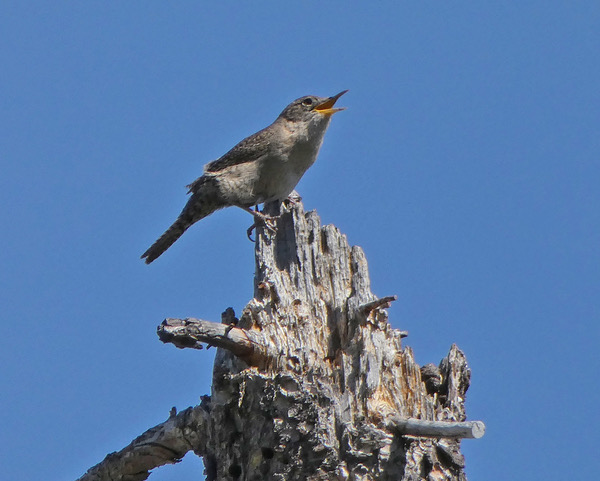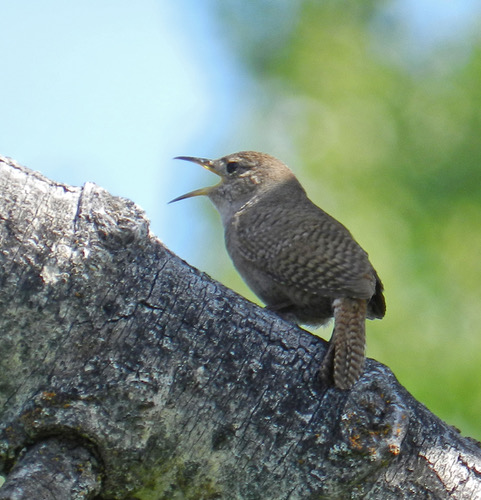As are all too well aware, summer in the Okanagan is fire season. In recent years major fires have destroyed not only homes and other buildings but much of our natural landscape. Fire, like flood or wind, can alter the landscape in dramatic fashion. But the changes are not necessarily all bad for some bird species. And today’s bird in focus, the Northern House Wren, has benefited from fire activity in ways you might not expect.
Northern House Wrens are small birds that nest in tree cavities, holes naturally made as a tree dies and breaks down. Sometimes this process is helped along by large bird species such as woodpeckers or by animal species such as squirrels or even by insects such as beetles. The resulting holes in the dead or dying tree are prime real estate for species such as bluebirds, nuthatches or wrens. After the Okanagan Mountain Park Fire of 2003, many such holes were to be found all across the burn area, and the numbers of House Wrens that found them ideal for nesting soared.

Northern House Wren with food for its young.
How do we know? Every June members of the local naturalists’ clubs in Kelowna and Penticton fan out across Okanagan Mountain Park and count species; birds, mammals, insects, invertebrates – all are tallied and the results tabulated. This count began before the fire and continues to this day, so we know that the big fire of 2003 reduced the numbers of some species and increased the numbers of others, because the habitat each needed had been so changed. Northern House Wrens were the most abundant bird species found by the observers for quite a few years immediately after the fire. Now, more than 20 years later, their numbers have started to decline somewhat from the peak recorded but they are still thriving.

Northern House Wren on a nest box.
Northern House Wrens (the ‘Northern’ was recently added to the official species name), are small, plain-looking yet companionable birds. The word ‘House’ in their name indicates their tolerance for living in manmade nest boxes, many in close proximity to humans. They are only 4.5” in length/~11.5 cm, with a wingspan of 6”/15cm. The body is a pale greyish brown, the beak thin and slightly curved, the throat is a paler brown and the tail, wings and lower back show a darkish or russet barred pattern. They can be aggressive in spite of their small size, sometimes driving away other nesting birds and even destroying their nests or eggs! Much can be forgiven of them when you hear them sing, however, an easily recognizable song beginning with a few short sharp notes, followed by a bubbly explosion of trills and phrases, loud, musical and pleasant and often repeated multiple times.

Northern House Wren singing.
Northern House Wrens breed all across the continental US and the southernmost part of the Canadian Provinces, with a noticeable expansion of territory as far as north-eastern BC and northern Alberta. Two to three broods of 5-8 eggs each are raised each summer. They feed on insects and spiders, foraging in trees and shrubs in brushy woods, hedges and gardens. Once breeding is over, they migrate southwards to winter in the southernmost states and Mexico. Listen and watch for them if you’re near any burned-over area, Rose Valley, Okanagan Mountain Park, Bertram Creek Park and similar habitats. You might even be lucky enough to have them nesting in a nest box right in your own back yard. Enjoy them while they’re here for their short summer breeding season – and remember to look and listen again when they return next May.
Pam Laing
Okanagan birder

